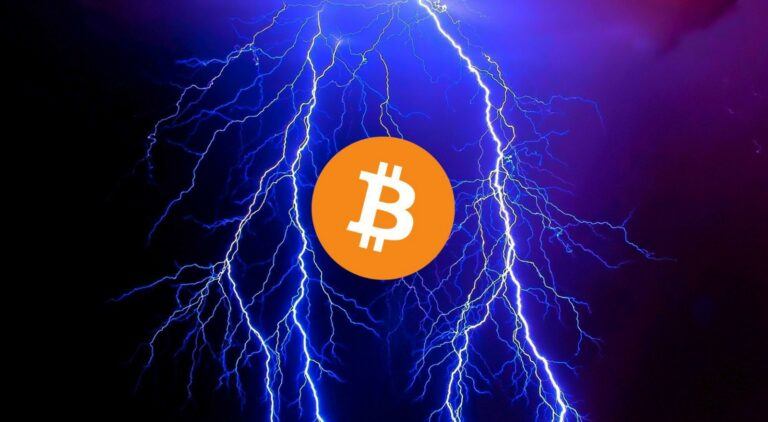At this point of development, the Lightning Network hasn’t quite reached user-friendliness. The number of nodes is expanding every day and the system processes a larger number of transactions, yet the exponential growth towards involving the lesser tech-savvy users is still lacking. Critics deem Lightning as being too complicated, overly ambitious and not part of Satoshi’s whitepaper vision.
Well, Lightning Labs seems determined to dismiss criticism, as they published a blog post that’s meant to make everything about LN simple and transparent.
In theory, anyone who’s ever used Bitcoin by accessing a mobile wallet is able to understand the entire narrative, and that’s the whole point. As Andreas Antonopoulos pointed out in a recent podcast, the same brilliant engineering which made the internet accessible to the masses by creating friendly interfaces will also make Lightning accessible to the masses.
Carol: A Casual Crypto HODLer
Carol is the archetype of the casual cryptocurrency HODLer who lives a busy and active life which doesn’t give her much time to learn technicalities. She appreciates the convenience of Bitcoin and sees it as the future of payments, but probably won’t ever make contributions on any Github. Carol is representative for the average crypto user who just wants to benefit from a quick, secure, and reliable way of shopping and storing value.
This is where the interesting part begins, as our protagonist lives in a not-so-distant future where Lightning Network benefits from friendly interfaces, multi-platform accessibility, and merchant adoption. This means that she can just get the Lightning App on her phone, write down the 24-word back-up seed as she would do on most mobile wallets, and eventually put some bitcoin on it by making transactions. It’s worth mentioning that this initial fill is an on-chain transaction which requires an hour to get completely validated.
Furthermore, a light client called Neutrino is in charge – synchronizing the wallet with the Bitcoin blockchain, and this process is seamless, runs in the background, and takes only a few minutes to complete. After the on-chain transaction gets confirmed, another component of the Lightning App called Autopilot will transfer the funds onto the Lightning Network. The process takes another hour, and is performed only the first time – future instances will be instant.
Carol is Ready in Two Hours
In two hours, Carol has made her bitcoin available on the Lightning Network. The good news is that sending transactions is no different from the way we’re using cryptocurrency wallets right now. For both the merchant and the customer, it’s all about generating and scanning a QR code with the smart devices that they’re using (the technology is also NFC-friendly, but not every phone will benefit from its integration).
The confirmation is made instantly, and the system is beneficial for both Carol (who pays smaller fees than if she was using a credit card, less than a cent) and the retailer (who doesn’t pay the credit card fees, doesn’t have to worry about frauds thanks to immutable transactions, and receives the funds instantly without having to wait for costly institutional transfers).
 Image Source: Lightning Labs
Image Source: Lightning Labs
Frontend is Simple, Backend is Complex
There is quite a lot going on with the Lightning Network transactions. Payment channels are opened between those who exchange funds, smart contracts are established in order to make sure that the amount of bitcoin gets exchanged no matter what.
Autopilot automatically finds five routing nodes (computers that are online to connect the peers and validate the transaction). Watchtowers protect peers against fraud and automatically disconnect them from the internet if anything goes bad. A splicing process happens if the receiver doesn’t integrate Lightning and requires an on-chain transfer. Atomic Multipath Payments divide big transactions into more processes for the sake of speed and security.
It all sounds complicated, but Carol doesn’t have to know all of this. It’s all automatic, and all she has to do is to make sure that the Lightning routing is established, the fees are according to the 1-cent expectation, or else decide if she’s willing to pay extra for a splicing. Online payments will likewise be made instantly by scanning a QR code and refilling the Lightning account can be done just by transferring bitcoin from the exchange.
Just like Carol, we will soon be able to use the Lightning technology without understanding any of the technicalities. Similarly, we’ve become acquainted to the internet through the friendliness of Netscape and Internet Explorer (which integrated all the underlying protocols).
It’s the job of engineers to create user-friendly experiences which make the latest technologies accessible to the masses, and if everything goes according to the roadmap, Lightning will soon take the world by surprise, silence all critics and non-believers, and popularize second-layer protocols… Or else we’ll just centralize by increasing block sizes whilst citing Moore’s law as a justification.
Read the entire article about Carol and the underlying technicalities of LN on the Lightning Labs blog!









